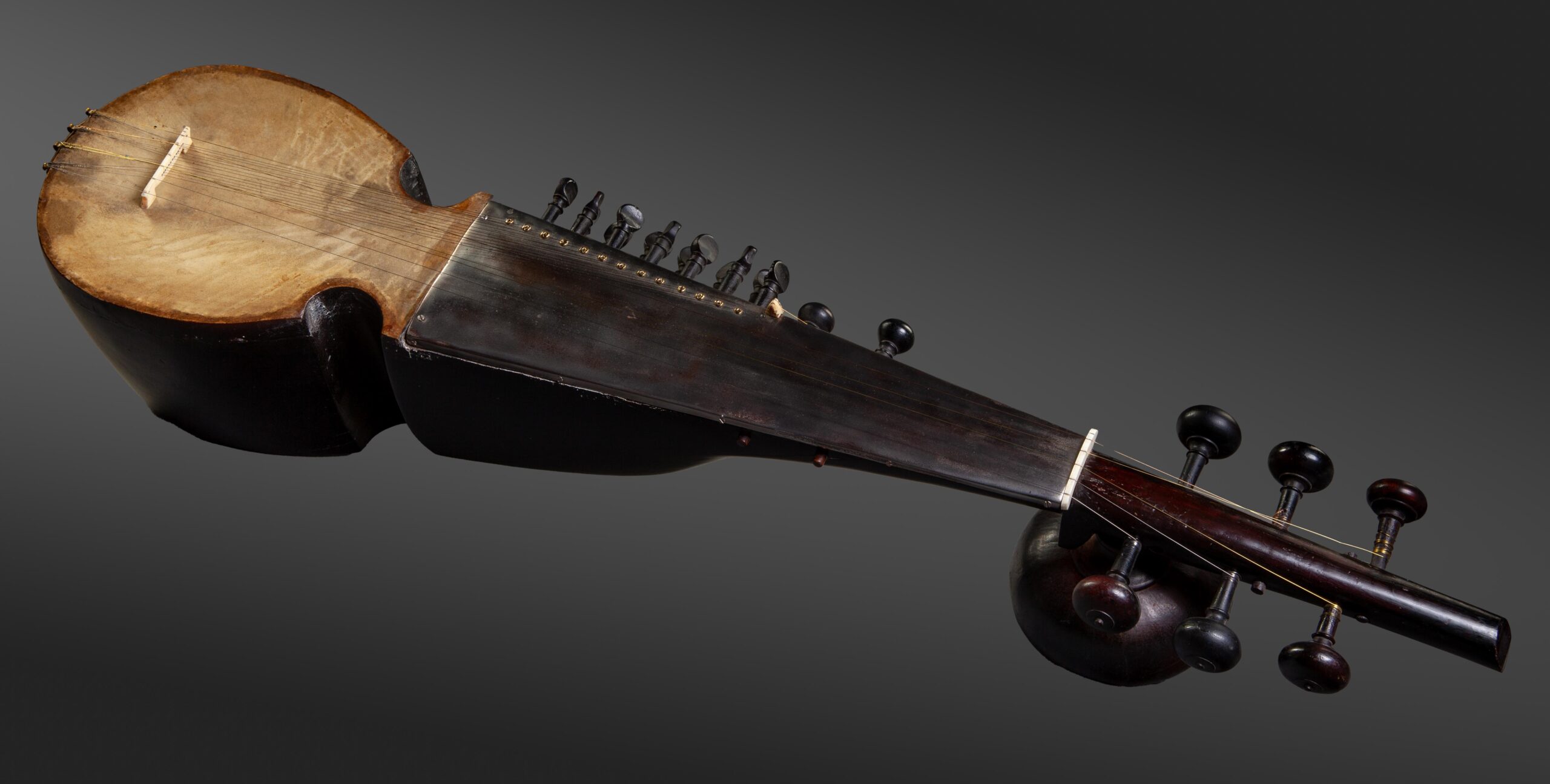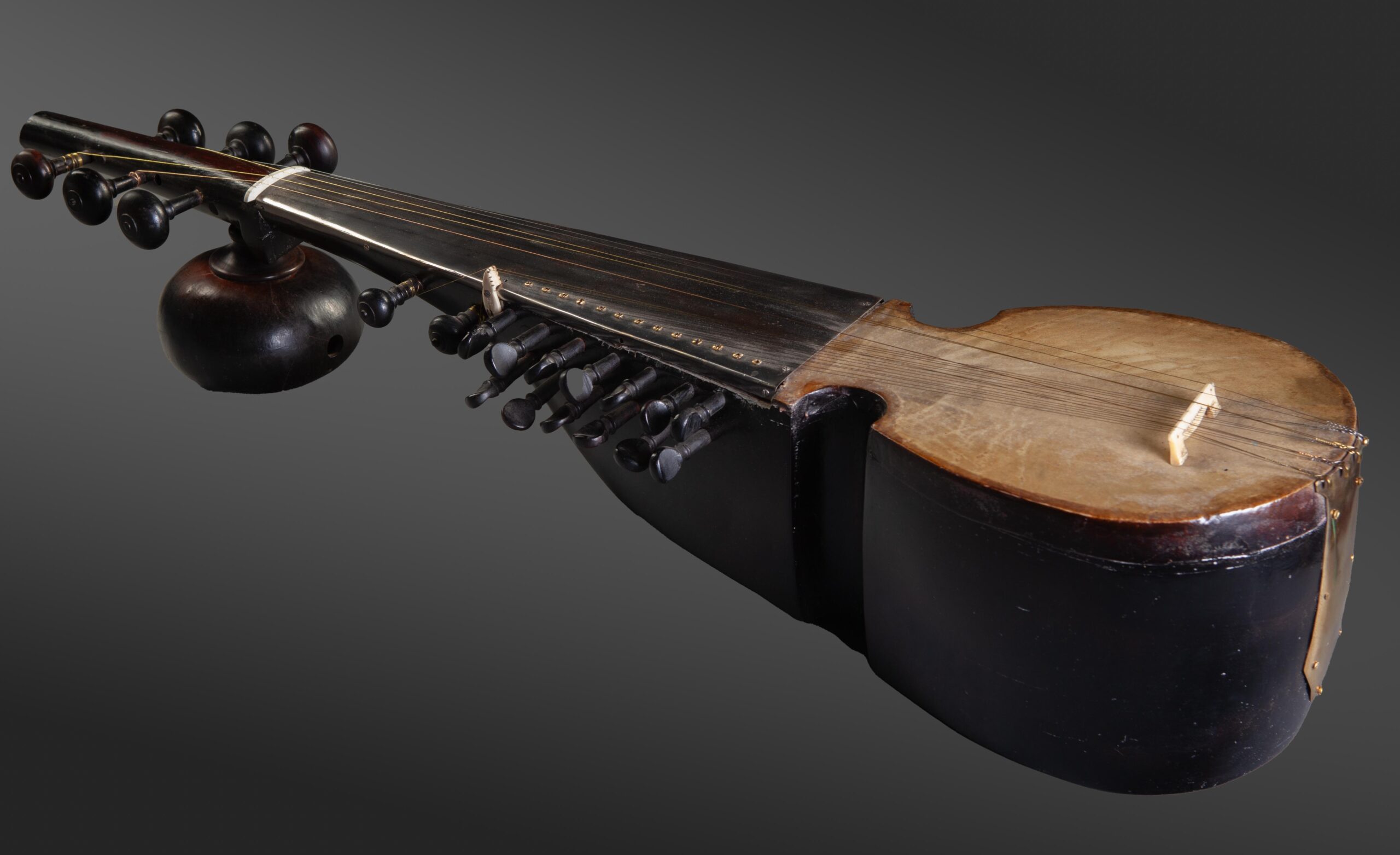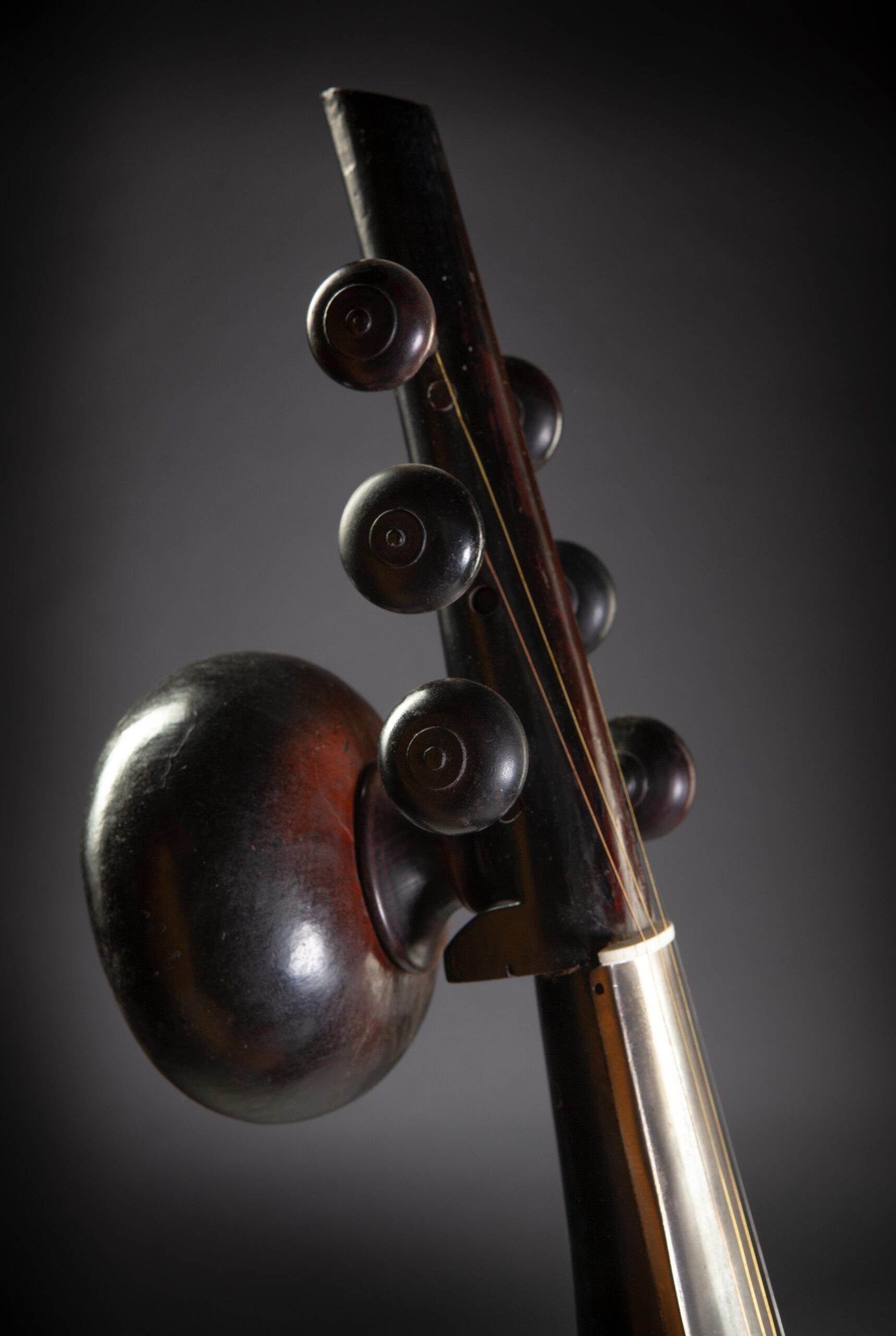SAROD
India 19th – 20th century.
Directly derived from the Afghan Rabab, the sarod characterizes the dual principle of adoption and adaptation of an object (here a musical instrument), transmitted from one society to another.
Brought by Pashtun immigrants from Afghanistan, it spreads across the plains of Uttar Pradesh in northern India. The vagaries of history (and of the British administration) will push a significant part of the population to emigrate once again, to West Bengal, particularly to Calcutta.
The sarod, whose presence is attested in 1830 (1) was modified in the 1860s by the luthier Na’matullah Khan (1816-1911) who adapted the characteristic metal fingerboard. His descendants continued to modernize the instrument…
The sarod presented here is of the model of Ghulam Ali Khan (died in 1870) with six playing strings. The sympathetic strings are fifteen and unlike modern instruments, it does not have the extension of the nut intended to receive three additional strings.
Materials: Wood, black pigment, skin, metal, bone.
Some cracks glued on the body. Some wormholes on the skin and towards the fingerboard junction.
Length: 105.2cm Width: 23.3cm Body height: 19.6cm
Bibliography:
Alastair Dick: “the Grove dictionary of Musical Instruments” Laurence Libin, Editor in Chief. T.4, pp. 389… Oxford University Press 2014.
David Trasoff: “Glory of princes, praise of the gods” Exhibition catalog, Music Museum, Paris 2003. (pp. 214…) (1)


